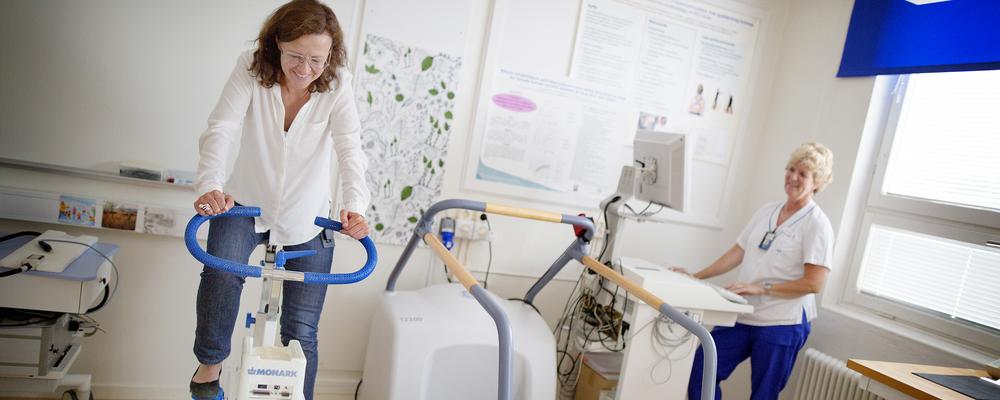
Occupational and environmental medicine
Can traffic noise cause sleep disorders? How can the number of workplace accidents be reduced? And how is the immune system affected by toxins in our immediate surroundings? These are examples of questions addressed in Occupational and Environmental Medicine.
We analyse the relationship between health and ill health in terms of work, housing and other environmental settings. This involves investigating and studying how people are affected by such factors as chemical substances, noise, vibrations, physical stressors and stress in general.
Our research is conducted at the Unit of Occupational and Environmental Medicine in Gothenburg. This Unit is integral to both Sahlgrenska University Hospital and the University’s Institute of Medicine.
Research areas
Research takes place in five subject areas. More information is given below, and further details may be found on the various research groups’ pages.
Work capacity
This group aims to generate sustainable health and work capacity through innovative research and by putting research findings into practice. Our focus is on prevention of pain and musculoskeletal disorders, vibration injuries and mental symptoms. In addressing the symptoms concerned, the research also identifies supporting and impeding factors. One important area is recovery (recuperation), during both working and leisure time.
Our research within work capacity (webpage under construction)
Sound environment and health
This research group conducts interdisciplinary research on the importance of the sound environment for human health in various settings and in a lifetime perspective. Our vision is that people are entitled to a sound environment that enhances their good health and development as they progress through life. A major part of our focus is how children are affected by noise in the course of their development. Other important research areas are the impact of noise on health and hearing at female-dominated workplaces and long-term effects of noise in the housing environment. In our unique sound environment laboratory, we explore the effects of noise and vibrations on sleep, for example.
Our research within sound environment and health
Airways and health
This group assesses the risks of asthma and chronic obstructive pulmonary disease (COPD) in relation to workplace and environmental exposure. We are also developing painless methods of detecting inflammation in the small airways at an early stage. At present, there are no available tools that can detect and diagnose diseases such as lung cancer and COPD in their early stages. The research group has developed a non-invasive method that allows small samples to be taken from the layer of liquid on the surface of the small airways.
Our research within airways and health (in Swedish)
Environmental medicine and toxicology
This research group maps the presence of various substances, such as heavy metals and air pollutants, in the environment and how they affect human health, both in commercial environments and in the population. Our areas of investigation include heavy metals, air pollutants, noise and highly fluorinated substances. The latter are stable compounds that degrade very slowly and therefore persist in the environment for long periods. Examples are per- and polyfluoroalkyl substances (PFAS). We also study how people’s health is affected by working in a hot climate and by climate change.
Our research within environmental medicine and toxicology (in Swedish)
Safety, organisation and leadership
This group studies various aspects of workplace safety and what affects it, such as psychological and social factors, organisational culture and the physical environment. We investigate both the causes of safety deficiencies and how various interventions can serve to make changes. Our projects are located in a range of sectors, such as construction, food, healthcare, municipal activities, mining and processing industry, and at airports.
Our research within safety, organisation and leadership
Important findings
In the past few years, our researchers have been able to show that:
- Education in mental ill health is a crucial determinant of whether managers work preventively
- Diseases such as lung cancer and COPD can be diagnosed earlier with the use of a new method of analysing tiny particles in exhaled air
- People exposed to chemical weapons often suffer from lifelong ill health and chronic injuries
- Hearing-related problems are common among preschool teachers and staff in obstetric care
- Gothenburg residents with high air pollution levels in the vicinity of their homes are at increased risk of dying prematurely
Close connection between research and education
There is close cooperation between the Institute’s research and our education and training, in which many of our researchers too are involved. They supervise doctoral students and teach on our regular programmes, freestanding courses and vocational care programmes within Sahlgrenska Academy.
